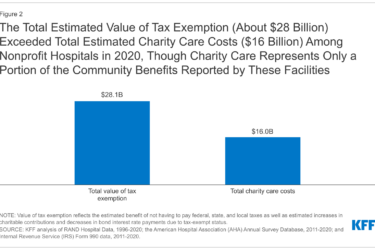
Remember all those stories about people being shifted into part-time work so their employers don’t have to provide health insurance?
According to a new Urban Institute report, funded by the Robert Wood Johnson Foundation, it hasn’t happened.
If, and when, the employer mandate fully kicks in (more on that below) things could change. But the anecdotes we’ve heard about employers cutting hours because of the Affordable Care Act are just that – scattered anecdotes. (And when it does occur, it might be a result of other business conditions, not the health law). Under the ACA the definition of “full-time” work is 30 hours; anyone working 30 hours a week or more would have to be covered. The fear was that employers would cut them to, say, 28 or 29 hours, to avoid that obligation.
The Urban Institute authors wrote:
We find no evidence that the ACA had already started increasing part-time work before 2014. We find a small increase in part-time work in 2014 beyond what would be expected at this point in the economic recovery based on prior experience since 2000. This increase in part-time work is fully attributable to an increase in involuntary part-time work. The increase in involuntary part-time work, however, is not specific to the category of part-time work defined by the ACA (i.e., less than 30 hours per week), but applies to part-time work more broadly (also between 30 and 34 hours per week). Moreover, transitions between full-time and part-time work in 2014 are in line with historic patterns. These findings suggest that the increase in part-time work in 2014 is not ACA related, but more likely due to a slower than normal recovery of full-time jobs following the Great Recession.
Nor did they find that people are voluntarily cutting their hours (say from 40 to 32) because they can still get health insurance without the traditional 40-hour week. And, to the extent that part-time work is very slightly higher than expected, they say the slow economic recovery after the recession is to blame.
So how could the employer mandate change this?
It is still possible that businesses will initiate a shift to more under-30 hour work weeks as the mandate nears. (And the mandate requirement and penalties include a “look back” – what the workforce looks like before the start date of the mandate.) But the mandate has been delayed twice, and it’s being phased in much more slowly. And it’s not at all certain it will ever happen at all, for political reasons.
Remember, if a small business (with fewer than 50 workers) in your community says they are cutting jobs or hours because of the mandate – it’s not true. They are exempt and always have been under the ACA.
For businesses with 50-99 workers, the mandate has been postponed until 2016.
Larger businesses do face the mandate in 2015 – but they will only have to cover 70 percent of the workforce the first year. They can’t pick and choose individuals but they can choose categories. If they don’t want to cover people working, say, 30-32 hours, they may not have to (depending on how they’d hit that 70 percent threshold). Most large businesses already offer health insurance. Some of the service industries that do not offer insurance or do not offer comprehensive insurance already rely heavily on part-time workers.
Even some Democrats and liberal-leaning policy thinkers have raised questions about the employer mandate. Some question its poor design, and want to replace it. Others have concluded it really won’t boost coverage all that much and it’s causing so much political trouble for the ACA that it isn’t worth it. Watch this debate in the coming months, particularly if the GOP captures control of the Senate.
And in the meantime, be skeptical if a local business starts slashing hours because of the ACA. Maybe it’s health costs. But maybe it’s totally unrelated.









